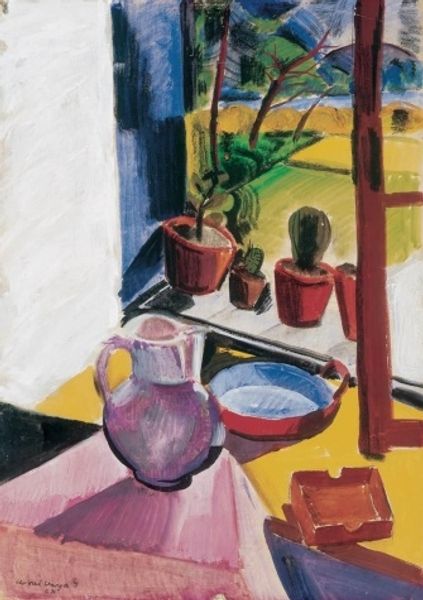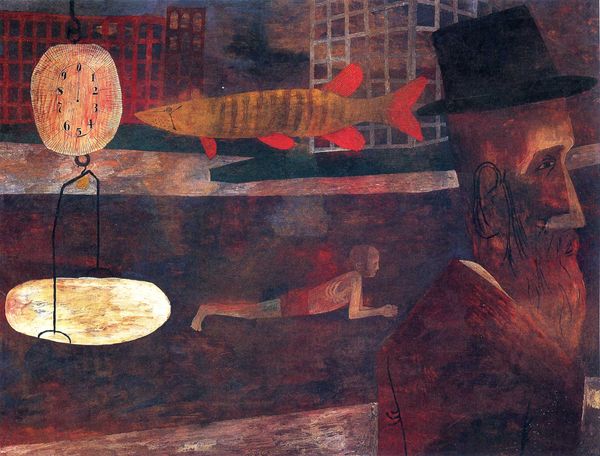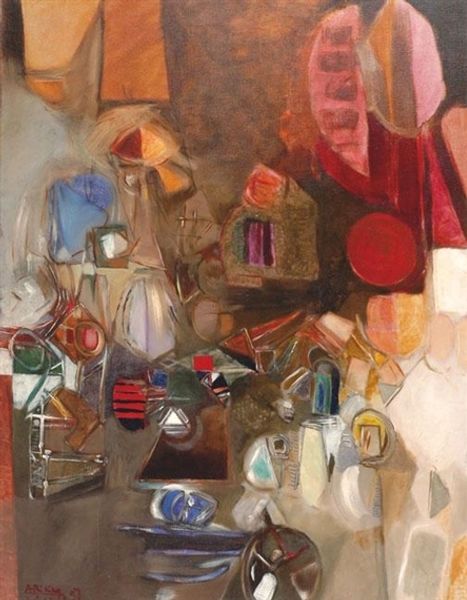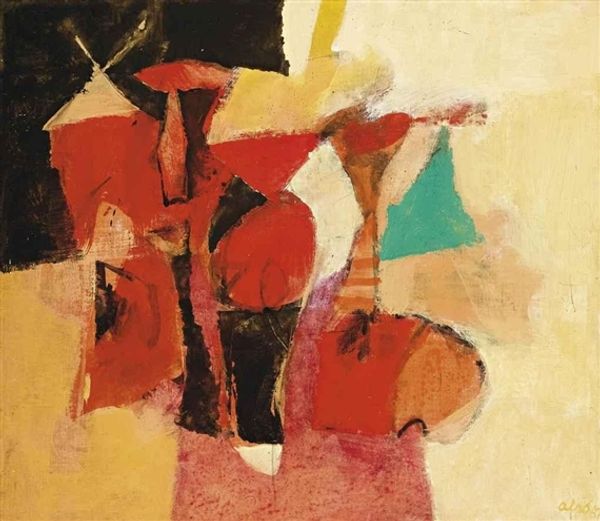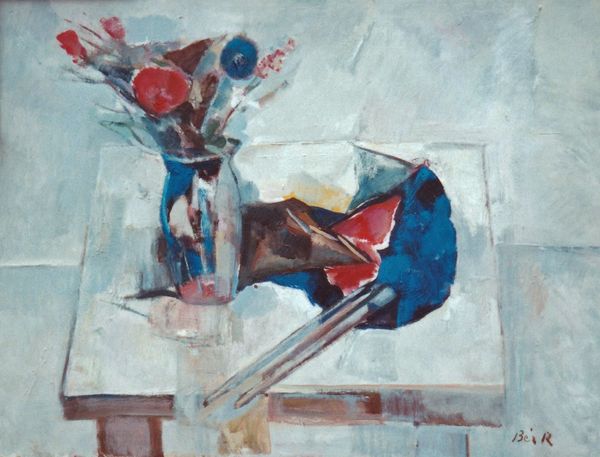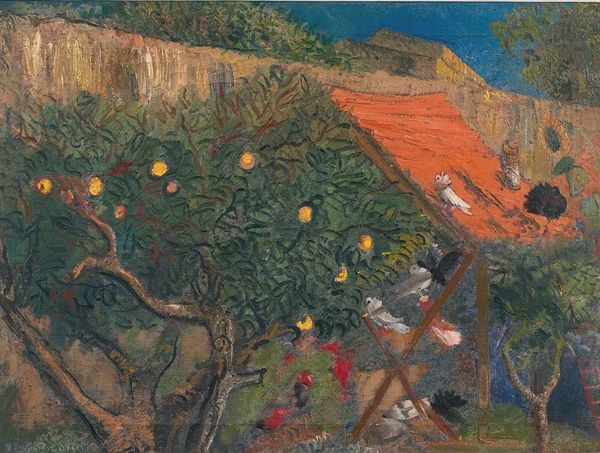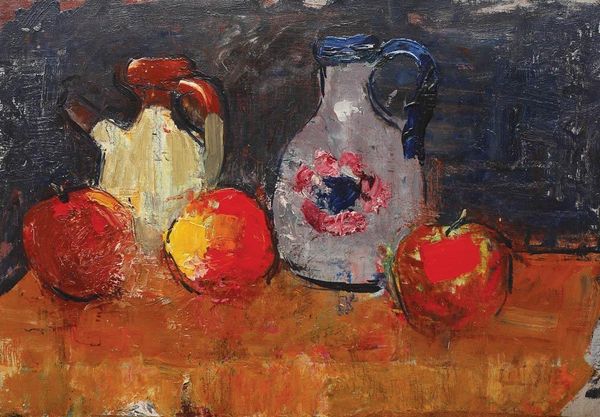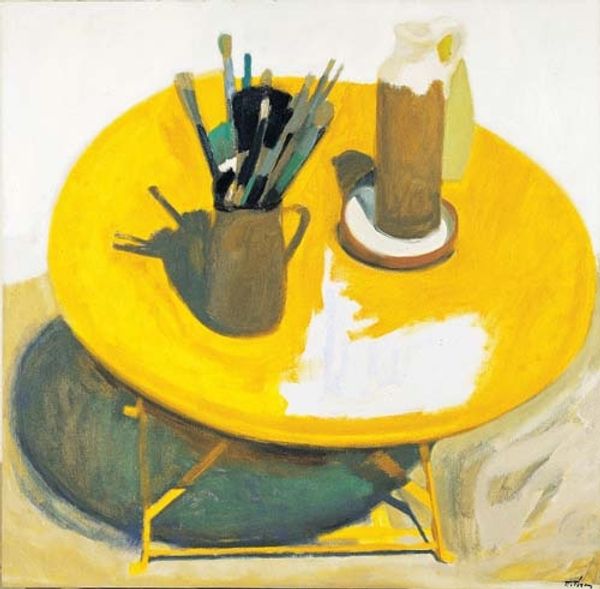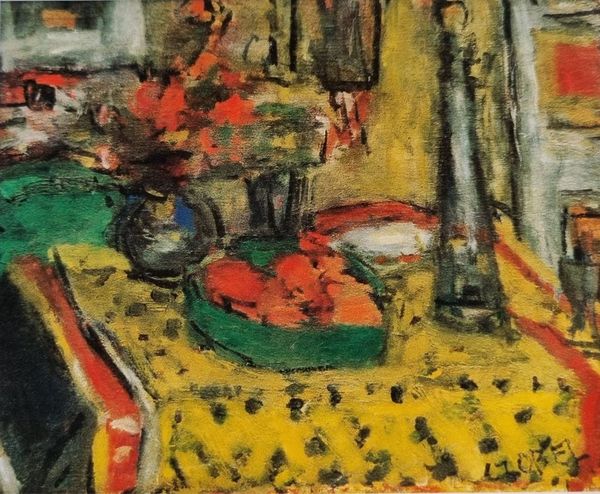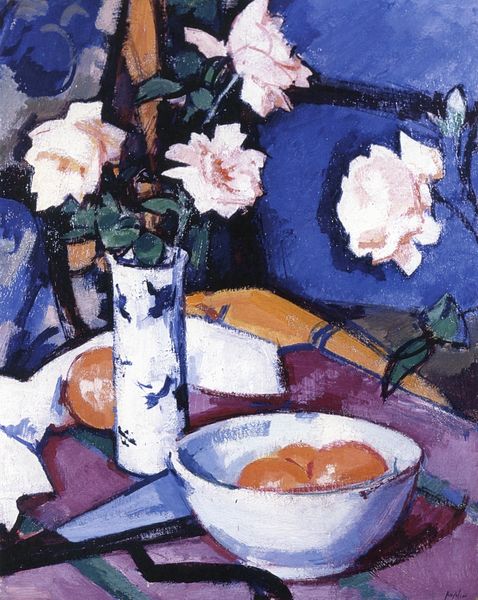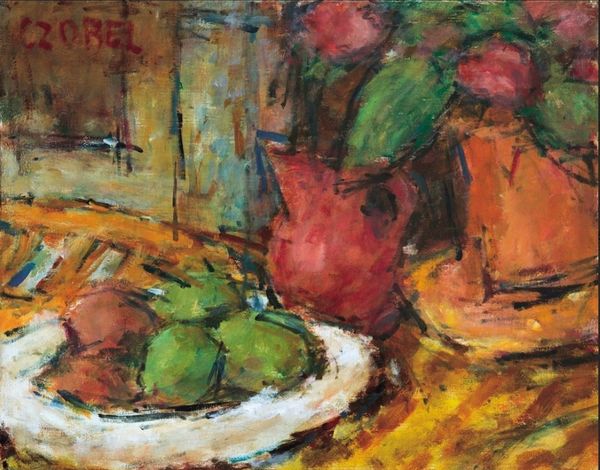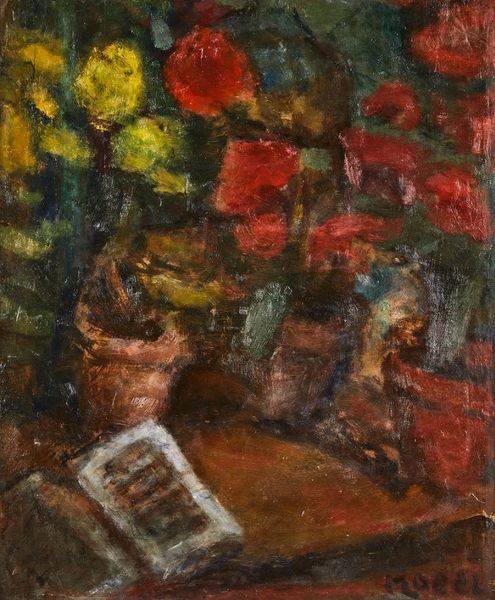
painting, gouache, oil-paint
#
gouache
#
painting
#
gouache
#
oil-paint
#
oil painting
#
abstraction
#
russian-avant-garde
Dimensions: 57.5 x 71 cm
Copyright: Public domain
Curator: Here we have Kuzma Petrov-Vodkin’s “Pink Still Life” from 1918, a work that reflects the artistic ferment of the Russian avant-garde. Editor: The surface of the canvas has an incredible texture to it, almost sculptural in its build-up. Curator: Absolutely. Petrov-Vodkin employs both oil and gouache in this composition, showcasing his experimental approach to materials and methods, which moves beyond purely representational depictions. This was made during a tumultuous time in Russia. How do you think those sociopolitical issues may have seeped into the art production and his aesthetic choices here? Editor: Perhaps this is most obviously expressed by the materials; using readily accessible mediums such as oil and gouache. In this sense the artist, whether or not overtly attempting to create works speaking to the people, participates in a vernacularization, a democratizing of art production simply through their material and production based decisions. Curator: His subjects too, seem deliberately ordinary, don’t they? Simple fruits, a glass of water, captured against abstracted, geometrical shapes that are a conscious rejection of more academic still-life painting styles of the era. Note too how his positioning of the fruit, almost suspended on this tilted plane, hints at this Russian artist's interest in challenging established Western visual conventions. Editor: But I don’t see it as a rejection of form but rather the exploration of it. This piece reminds me that, the making of art, irrespective of style or status, can reflect and reveal deep social structures. It brings up for me thoughts regarding the accessibility of art and resources for marginalized people. Curator: Interesting. As you say, Petrov-Vodkin's “Pink Still Life” serves as a lens through which to explore both artistic innovation and the broader public role of art. Editor: And a meditation on the physical qualities of color and composition, the making-of is almost more pronounced than what is shown.
Comments
No comments
Be the first to comment and join the conversation on the ultimate creative platform.
